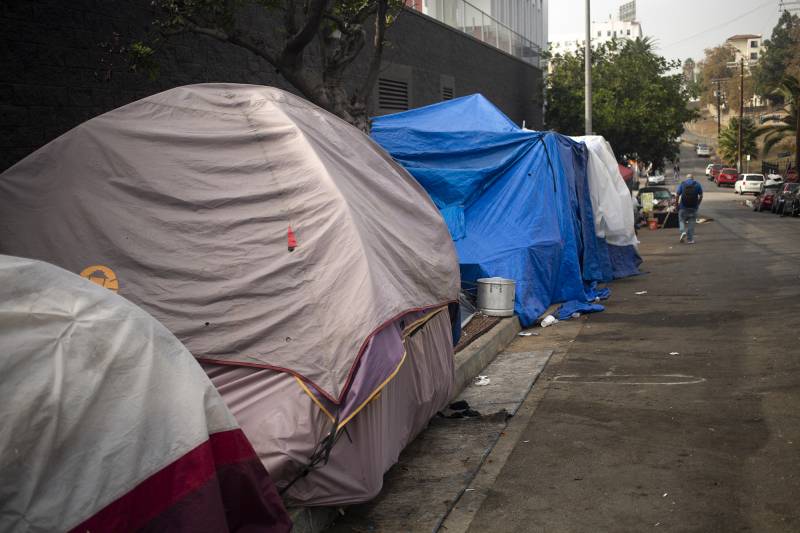But despite the proposed increase in grant funding, Christopher Martin, policy director for Housing California, lamented the lack of funds to quickly move unhoused people into existing housing.
“There’s not a dime in here that is going towards rental assistance or permanent housing,” he said. “Building shelter and treatment beds, that takes time. That’s going to take years. These people are dealing with the elements today.”
Rental assistance for people with housing but who are at risk of being evicted also is running out. The state has so far received relief application requests totaling more than $6.8 billion, according to BCSH's dashboard. That's well over the $5.2 billion it has gotten from the federal government, about half of which is administered by local jurisdictions.
The agency previously expressed confidence that the need would be filled by another round of federal funding, but in response to California’s recent $1.9 billion request to the U.S. Treasury Department, the state only received $62 million on Friday, Newsom said.
“And so for the purposes of this budget, we are looking to continue to engage directly with Treasury, the Biden administration, as we have been, and directly with legislative leaders,” he added.
Newsom’s blueprint to tackle California’s housing crisis totals another $2 billion and prioritizes the state’s climate goals.
“I just want to reinforce, to some extent … moving away from investments in housing that don’t focus on climate, health, integrating downtown schools, jobs, parks and restaurants,” Newsom said.
That includes about $800 million in grants to develop housing units and the infrastructure around them in mostly downtown areas, “in that space away from the sprawl,” he said. The idea is to avoid building in areas prone to wildfires, and to prevent the greenhouse gas emissions that result from long commutes.
Of that money, Newsom wants to set aside $100 million to help offset the high costs that can make it prohibitively expensive to convert old offices and other buildings into apartments — a practice that UC Berkeley’s Terner Center for Housing Innovation found is most common in Los Angeles.
Besides prioritizing housing in downtown areas, the grant also would help meet the state’s climate goals by slashing the main culprit of construction waste: demolition. The remaining $100 million would go toward affordable housing on vacant state-owned land.
The other $1 billion in Newsom’s housing budget is focused largely on creating more affordable housing for the state's lowest earners, with $500 million going toward the Low-Income Housing Tax Credit, the largest funding source for building subsidized housing. The other $500 million would be used to preserve deteriorating affordable housing in downtown areas and rehabilitate mobile home parks, among other initiatives.
Matt Schwartz, president and CEO of the nonprofit California Housing Partnership, said while he applauds the new “short-term investments,” the money won’t come close to building the 1.2 million homes his group estimates the state needs by 2030.
“It’s time for the governor and state leaders to go beyond proposing another year of short-term assistance and instead commit to a long-term plan with sustained investments at the scale needed to solve the homeless and housing affordability crises and address climate change,” he said.
The League of California Cities, however, responded more positively to Newsom’s blueprint.
“The proposal makes good on last year’s promises by the state to continue investing in housing production, as well as housing coupled with mental health services for those experiencing homelessness,” Carolyn Coleman, the league’s CEO, said in a statement. “These proposed investments are a critical down payment by the state on the long-term funding needed to solve a decades-in-the-making crisis.”

